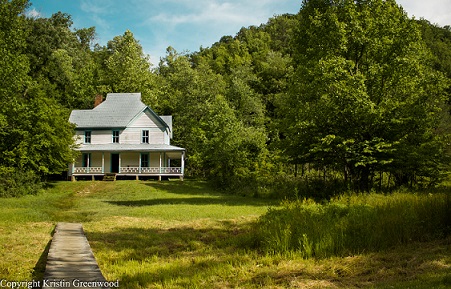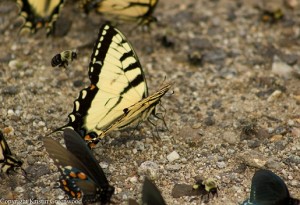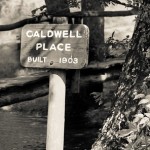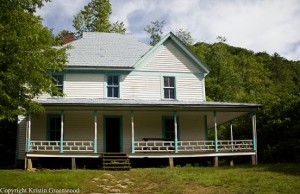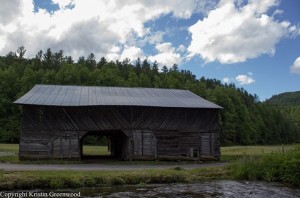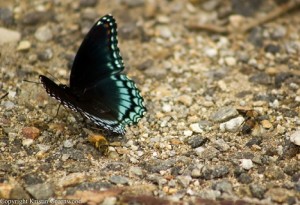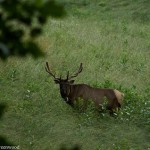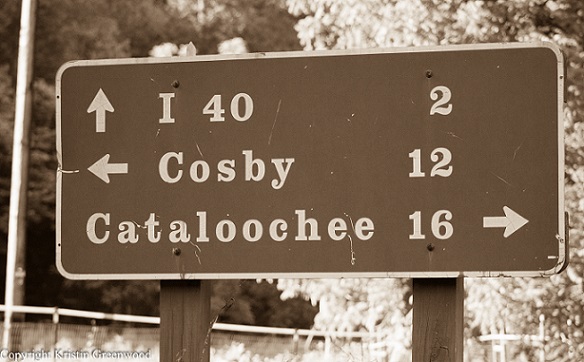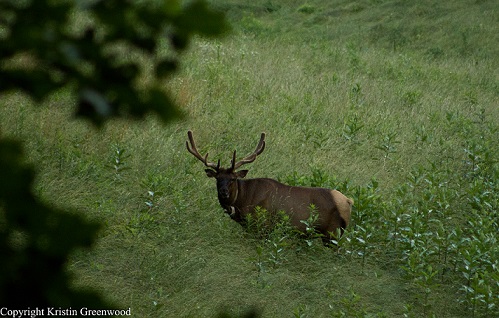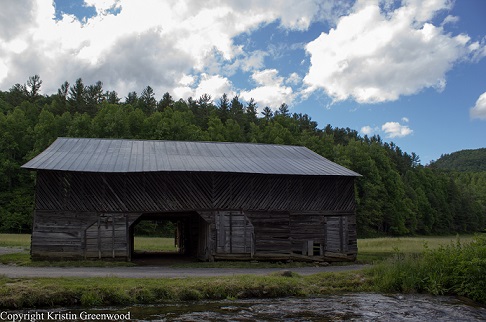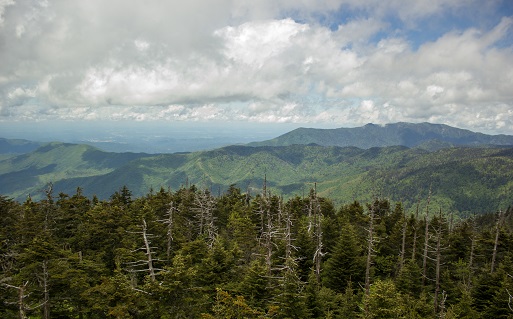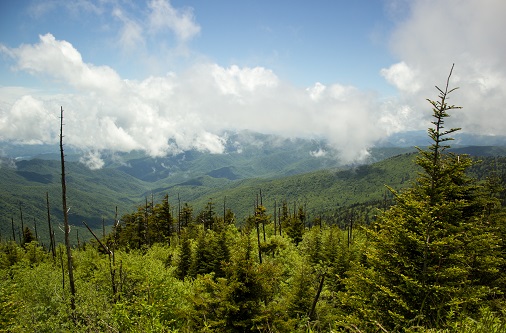After the climb up to Clingman’s Dome we quickly continued our exploration of the Great Smoky Mountains National Park in North Carolina. When you are in a special place and you have a limited amount of time, then you really try to squeeze everything out of each second you have left. We only had two days and with a size of about 520,000 acres (2,114.15km²), the Smoky Mountains had plenty left to see.
The Newfound Gap Road brought us to the Oconaluftee Visitor Center and thereafter we headed to the historical valley called Cataloochee Valley. The valley is fairly remote due to the unpaved roads which one has to drive through to enter it. The easiest way to access it is to drive down the Cove Creek Road which starts at I-40 (exit 20) or by heading north from Dellwood in North Carolina at US 276 and then turning left instead of entering the I-40. The unpaved Cove Creek Road was quite curvy and so you really have to be careful driving down the road.
The forest setting along the road with the sounds of nature can not only intrigue someone’s nerves but also your imagination. This raw nature must have been quite a challenge for the early settlers.
The Cataloochee Valley is filled with fields and some historical buildings. During our visit, the elk sadly remained within the woods. Apparently they are likely to be seen in the Cataloochee Valley around 3.00pm/4.00pm and the best time to catch a sight of them is during spring and autumn. Instead of elk, we discovered a swarm of butterflies* on the side of the road at a field before the historical buildings. This was also the point when the imaginary killer bee or hornet kept us hostage within the back of our car. The funny episode of our life on the road was so strange that one could think that this was all pre-planned and scripted when it simply wasn’t. It all happened exactly like that. This burst of fear and laughter didn’t stop us from driving further and we ventured onwards to the Caldwell Place.
The Caldwell Place was home to the early settlers and it was built in 1903 by Hiram Caldwell.
We parked next to the Caldwell Barn which was built in 1923. You can see the house from the barn. The house can be reached by walking over a short wooden bridge over a slow pacing creek. With those green fields around them, plenty of living space, the creek and the barn, the Caldwells really seemed to have everything they needed there.
As we filmed a short video there, some people came past us. One of them was a middle aged man who shook his head and said “I lived here all my life but I have never been here!” His comment reminded us of the women Paul talked to in the Lyndon B. Johnson National Grasslands. Isn’t it funny how we all want to reach for the stars by travelling to faraway places when there are raw diamonds just around the corner?
At the parking area before the barn were again some of those butterflies* and insects attracted to the ground. I couldn’t believe my luck. I really wanted to get a few more shots of them. Whilst I took a few photos a women asked Paul whether he knew a better way out of this valley. The twisty Cove Creek Road was already more than enough for her and her husband. He explained to her that there are only two roads out of Cataloochee. One is the Cove Creek Road and the other one is the road up to Big Creek. The other road up to Big Creek is also unpaved and actually quite a bit longer than the Cove Creek Road. The couple had to go back the Cove Creek Road. There was no other choice for them.
We reached for the adventure and took the longer road up to Big Creek. This road was also twisty and rough at times but for a driver who is used to these kinds of roads it was certainly manageable. Just before the end of the road in an area where we also saw some remote houses, we suddenly saw one lonely elk standing in the middle of a field.
* Good to know: Apparently what the butterflies are doing is called mud-puddling whereby they drink from the wet soil to extract minerals or salts.
Click here to see the video filmed at the Caldwell Place
Website of the Great Smoky Mountains National Park

